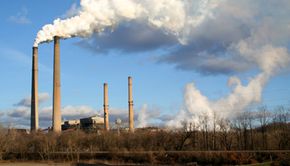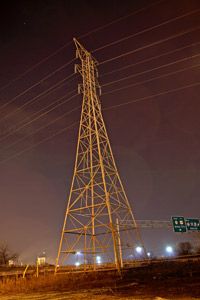When coal burns, it releases carbon dioxide and other emissions in flue gas, the billowing clouds you see pouring out of smokestacks. Some clean coal technologies purify the coal before it burns. One type of coal preparation, coal washing, removes unwanted minerals by mixing crushed coal with a liquid and allowing the impurities to separate and settle.
Other systems control the coal burn to minimize emissions of sulfur dioxide, nitrogen oxides and particulates. Wet scrubbers, or flue gas desulfurization systems, remove sulfur dioxide, a major cause of acid rain, by spraying flue gas with limestone and water. The mixture reacts with the sulfur dioxide to form synthetic gypsum, a component of drywall.
Low-NOx (nitrogen oxide) burners reduce the creation of nitrogen oxides, a cause of ground-level ozone, by restricting oxygen and manipulating the combustion process. Electrostatic precipitators remove particulates that aggravate asthma and cause respiratory ailments by charging particles with an electrical field and then capturing them on collection plates.
Gasification avoids burning coal altogether. With integrated gasification combined cycle (IGCC) systems, steam and hot pressurized air or oxygen combine with coal in a reaction that forces carbon molecules apart. The resulting syngas, a mixture of carbon monoxide and hydrogen, is then cleaned and burned in a gas turbine to make electricity. The heat energy from the gas turbine also powers a steam turbine.
Next, we'll learn about the most ambitious of all clean coal technologies and what needs to happen before clean coal can become commercially feasible.


